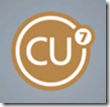 Mint CEO & Founder Aaron Patzer will be presenting next.
Mint CEO & Founder Aaron Patzer will be presenting next.
Online personal finance provider Mint launched a year ago and won a Best of Show award at our first Finovate conference in 2007.
What’s new
Mint moves out of beta today, with 500,000 users. Their sign-up rate has more than doubled in the past 3 weeks.
Today they launched new investment tracking functionality that allows Mint users to track their accounts at more than 1000 investment companies, mutual funds, and retirement services.
A unique aspect of its investment tracking is the ability to see the value of the account vs. the cost basis.
Mint has an IRA Rollover Advisor where they are partnering with Fidelity, Scottrade, E*Trade, and Schwab.
Results: 10% of users have changed investment behavior and 50% of users have changed their spending behavior by using Mint.


 Next up is
Next up is 






